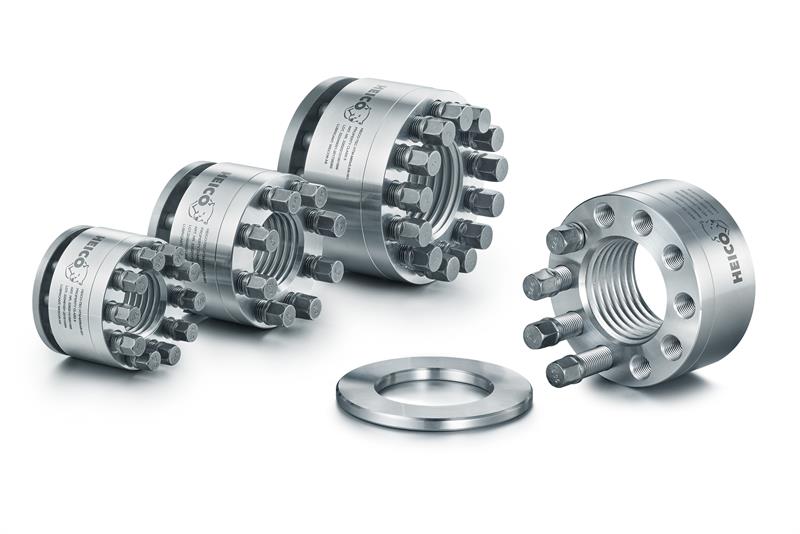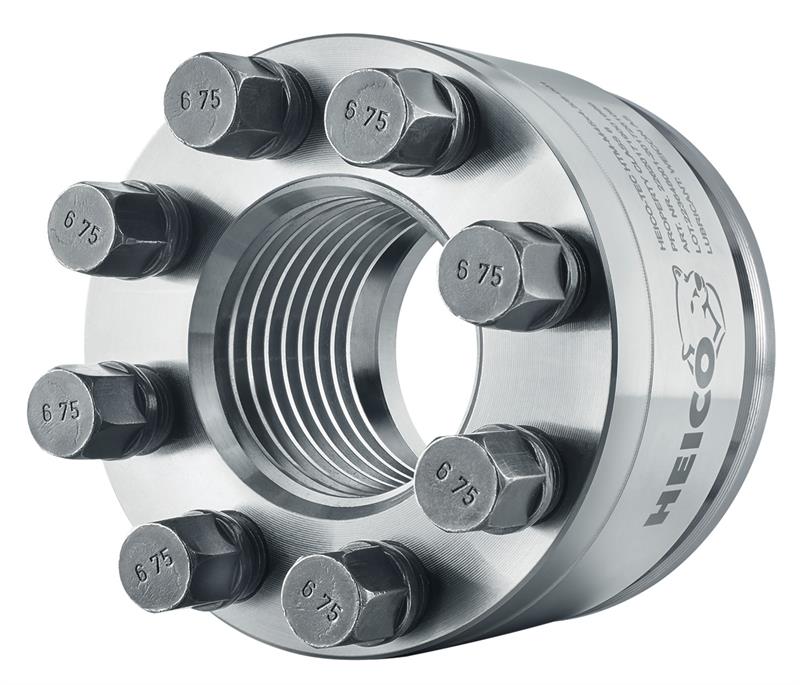When tightening a bolt with a hydraulic cylinder a percentage of the elongation of the bolt is lost in joint settlement meaning only around two thirds of the bolt strength can be utilised. Now, Heico Fasteners UK has released the HEICO-TEC Tension Nut which has a unique design that eliminates the need for specialist tools and maintains the full capacity of the bolt strength.
This innovative new product meets all the requirements of DIN EN ISO 898-2 so it can be used as a direct replacement for any hex nut from the same strength class whilst also offering all the advantages of a hand-tightened nut with no need for time consuming calculations and formulas to determine suitability.
The HEICO-TEC design consists of the nut body that is screwed onto the main thread just like a conventional nut – but it is not tightened. Several thrust bolts with associated pressure pins are arranged around the main thread inside the nut body. As these thrust bolts are smaller, a conventional torque wrench is all that is needed to achieve the required pretension force.

When the thrust bolts are tightened one by one, they push the pressure pins against the clamped parts while simultaneously elongating the bolt. The pre-tension force created in this way is purely axial and therefore free from harmful torsion or bending. An incorporated hardened disk protects the tensioned parts from high pressure loads caused by the pressure pins.
With the use of common tension nuts with pressure screws, the pressure screws are arranged closer to the bolt thread and have a smaller hexagon head. This results in less space to manoeuvre and the use of such tension systems results in higher costs due to the need for a special thin-walled socket and wrench. Typically, this tension system is not as strong as standard hex nuts and cannot replace commercial hex nuts, unlike HEICO-TEC which can be used as a direct replacement.

The inherent mechanical flexibility of the Heico design means the bolted joint performs as if it has a greater clamping length. This makes it highly resistant to loosening forces and, as the assembly is not damaged during tightening and loosening, is totally reusable with its greater flexibility reducing the bolted joint’s dynamic stress and increasing its service life.
For serial production Heico has developed the HEICO-TEC Multi-Tool which allows the simultaneous tightening of all the pressure bolts, simply with the press of a button. This is driven by a hydraulic unit incorporating a pump, controls and an oil container that can be used with an existing hydraulic supply.
When using HEICO-TEC for active pre-tensioning with through-bolted connections an equivalent reactive nut is required on the opposite end. By replacing a hex nut in such applications with the HEICO-TEC Reaction Nut the concave shape of the contact surface means the Reaction Nut can flex elastically in the direction of the bolted joint. A short-bolted joint is susceptible to fatigue failure and self-loosening, but the unique design of the HEICO-TEC Reaction Nut makes such a joint perform like a bolted joint which is two to three thread diameters longer and thus safer and more durable.










